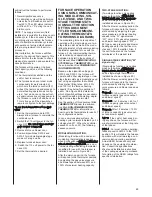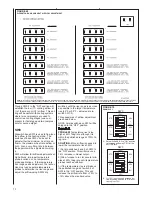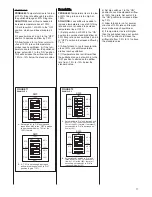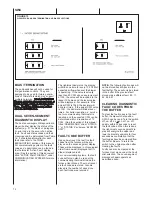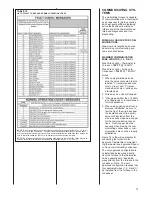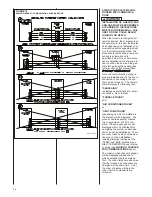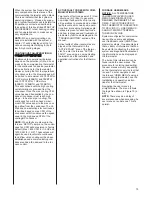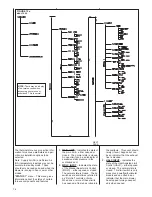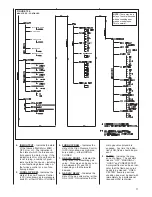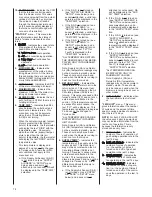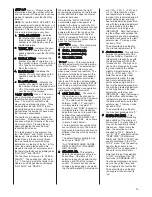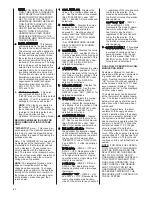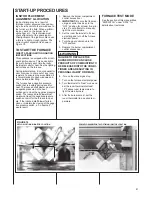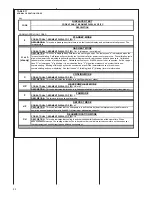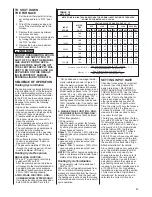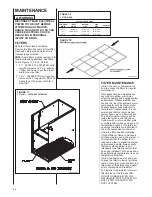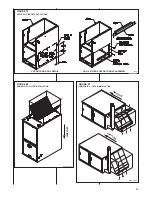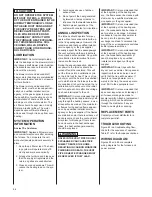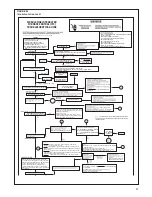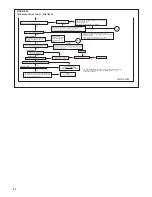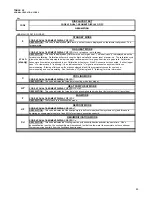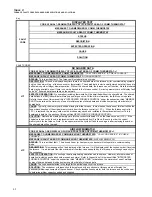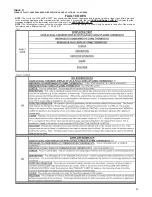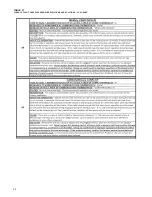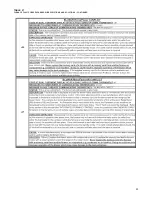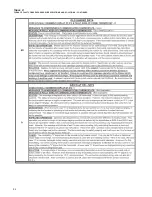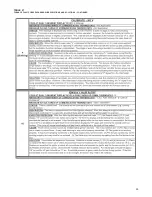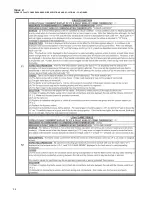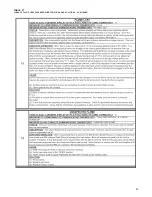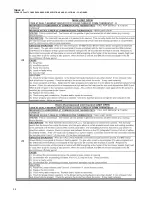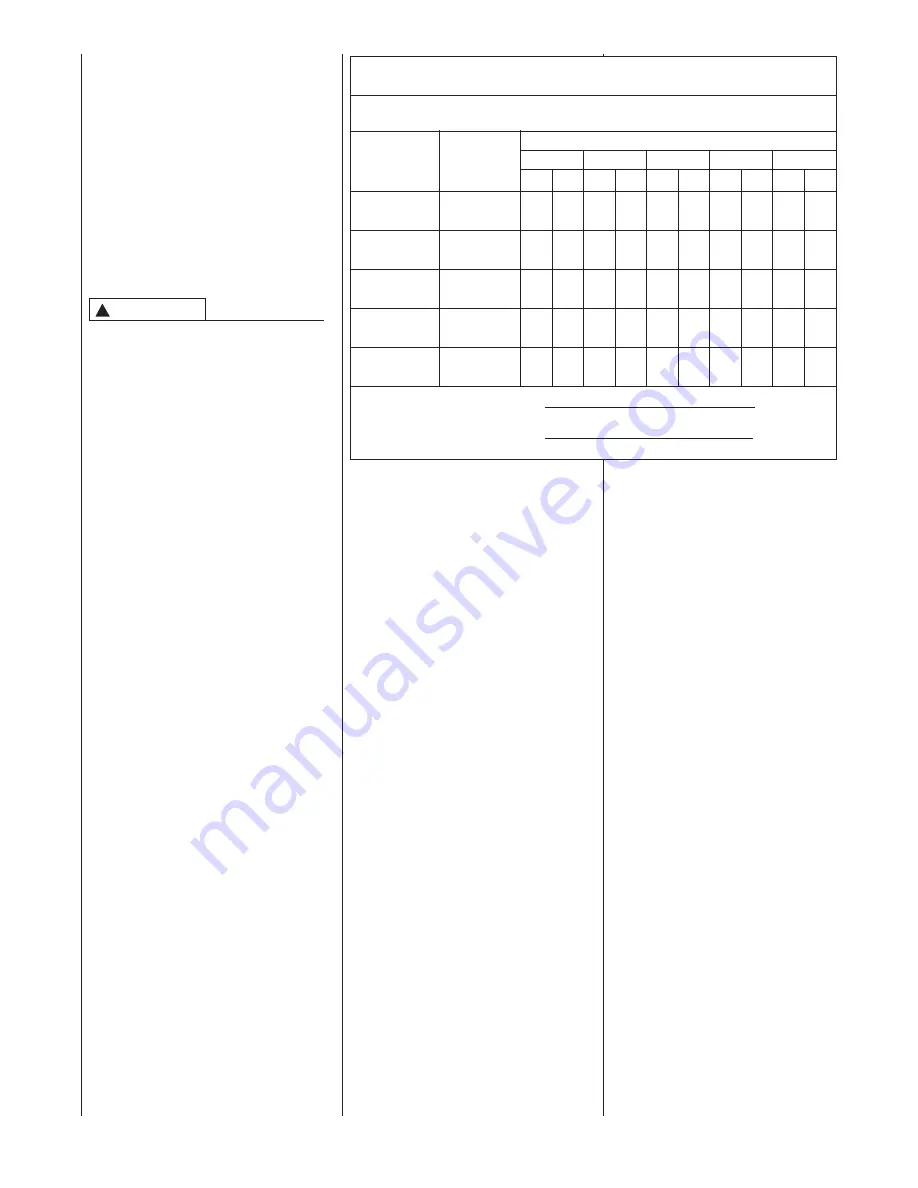
83
TO SHUT DOWN
THE FURNACE
1. Set the room thermostat to its low-
est setting and turn to “OFF” posi-
tion.
2. Turn off the manual gas stop and
turn off the electrical power to the
furnace.
3. Remove the burner compartment
control access door.
4. Shut off the gas to the main burners
by turning the gas control knob to
the “OFF” position.
5. Replace the burner compartment
control access door.
SHOULD OVERHEATING OCCUR
OR THE GAS SUPPLY FAIL TO
SHUT OFF, CLOSE THE MANUAL
GAS VALVE FOR THE APPLI-
ANCE BEFORE SHUTTING OFF
THE ELECTRICAL SUPPLY. FAIL-
URE TO DO SO CAN CAUSE AN
EXPLOSION OR FIRE RESULT-
ING IN PROPERTY DAMAGE,
PERSONAL INJURY OR DEATH.
SEQUENCE OF OPERATION
Heating Cycle Initiation
The heating cycle is always initiated by
a 24 volt signal on W of the thermostat
or, for communicating systems, a mes-
sage is transmitted from the thermostat
to the IFC. When the controller senses
24 volts on W or the communicated
message for heat call, the following
sequence occurs:
• High and low pressure switches are
checked to insure contacts are open.
• Inducer is powered on high speed for
a thirty (30) second prepurge.
• Pressure switches are monitored as
the inducer creates the vacuum to
close the contacts.
• The modulating gas valve is s
et to the
highest possible rate (no flow yet).
• The controller sends a spark signal to
spark across the electrodes.
• The main solenoids on the gas valve
are energized allowing gas to flow to
the burners.
• When flame is proven, the ignition
control is de-energized - 8 second
maximum trial time.
• The gas valve maintains 100% rate
through the warm-up period - 20 sec-
onds (aka Blower Off Delay).
Heating Cycle Response
MODULATING FUNCTION:
(“W” and “V” signal inputs, refer to dip
switch set SW2 on IFC)
After the warm-up period, the furnace
will respond to the thermostat demand
by adjusting the gas valve pressure
and blower speed anywhere between
40% to 100% heating capacity.
➤
TWO-STAGE FUNCTION – NON-
COMMUNICATING SYSTEMS ONLY:
(Two-stage function only applies when
both SW2-2 and SW2-3 are in the
“ON” position and a two-stage thermo-
stat is installed as shown in Figure ??.)
After the warm-up period, the furnace
will respond to the thermostat demand
by adjusting the gas valve pressure and
blower heating speeds to the “W” signal
values. “W” only = 40% gas valve pres-
sure and blower heating speed. “W2” =
65% gas valve pressure and blower
heating speed for first five minutes and
100% thereafter. Also, if the call for heat
ends, the furnace terminates at the pre-
sent rate.
➤
SINGLE-STAGE FUNCTION – NON-
COMMUNICATING SYSTEMS ONLY:
(SW2-2 and SW2-3 must both be turned
“off” for this operation.)
(“W” signal only)
After the warm-up period, the furnace
will respond to the thermostat demand
by altering the gas valve pressure and
blower speed as follows:
Phase 1:
0 to 5 minutes = 40% of furnace
capacity (gas valve output and blower
speed)
Phase 2:
5 to 12 minutes = 65% of fur-
nace capacity (gas valve output and
blower speed)
Phase 3:
After 12 minutes = 100% of fur-
nace capacity (gas valve output and
blower speed)
NOTE:
If the call for heat ends during any
phase, the furnace will terminate imme-
diately at the firing rate of that phase.
Heating Cycle Termination
(“W” signal only, refer to dip switch set
SW2 on IFC)
When the 24 volt signal is removed from
W1 or, for communicatiing systems, a
message is transmitted from the thermo-
stat to the furnace to “end the heat call”,
the heating cycle will end and the furnace
will shut down and return to the proper off
cycle operation.
TABLE 18
METER TIME
METER TIME IN MINUTES AND SECONDS FOR NORMAL INPUT RATING OF FURNACES
EQUIPPED FOR NATURAL OR LP GAS
HEATING VALUE OF GAS BTU PER CU. FT.
METER
900
1000
1040
1100
2500 (LP)
INPUT
SIZE
BTU/HR
CU. FT.
MIN. SEC. MIN. SEC. MIN. SEC. MIN. SEC. MIN. SEC.
ONE
0
54
1
0
1
3
1
6
2
30
60,000
TEN
9
0
10
0
10
24
11
0
25
0
ONE
0
44
0
48
0
50
0
53
2
0
75,000
TEN
7
12
8
0
8
19
8
48
20
0
ONE
0
36
0
40
0
42
0
44
1
40
90,000
TEN
6
0
6
40
7
0
7
20
16
40
ONE
0
31
0
34
0
36
0
38
1
26
105,000
TEN
5
10
5
40
6
0
6
20
14
20
ONE
0
27
0
30
0
31
0
33
1
15
120,000
TEN
4
30
5
0
5
10
5
30
12
30
DRY Heating Value of Gas (BTU/FT
3
) x 3600
Formula: Input BTU/HR =
x C • F
Time in Seconds (for 1 cu. ft.) of Gas
SETTING INPUT RATE
Checking furnace input is important
to prevent over firing beyond its
design-rated input. NEVER SET
INPUT ABOVE THAT SHOWN ON
THE RATING PLATE. Use the follow-
ing table or formula to determine
input rate. Prior to checking the fur-
nace input, make certain that all
other gas appliances are shut off,
with the exception of pilot burners.
Time the meter with only the furnace
in operation. Start the furnace, in
Furnace Test Mode, 100% rate, and
measure the time required to burn
one cubic foot of gas.
The furnace is shipped from the fac-
tory with #50 orifices. They are sized
for natural gas having a heating
value of 1075 BTU/cu. ft. and a spe-
cific gravity of .60. For high-altitude
models (option 278) the furnace
comes equipped with #51 orifices
installed for elevations 5,000 to
5,999 ft. These orifices may still need
to be changed based on both eleva-
tion and gas heating value. Consult
the section of this book titled “High
Altitude Installation” for details.
Since heating values vary geographi-
cally, the manifold pressure and/or
gas orifice size may need to be
changed to adjust the furnace to its
nameplate input. The rate will also
vary with altitude. Consult the local
gas utility to obtain the yearly aver-
age heating value and orifice size
required to fire each individual burner
at 15,000 BTUH. For high altitude
installations, also consult the section
of this manual titled “High Altitude
Installations” for details on how to
calculate the correct orifice size.
Gas Pressure (inch • Hg) x 520 (˚F)
Where C • F =
Gas Temperature (˚F) x 30 (inches • Hg)
!
WARNING
Содержание RGFE
Страница 92: ...92 TABLE 21 FURNACE FAULT CODES EXPANDED W DESCRIPTIONS AND SOLUTIONS CONTINUED ...
Страница 93: ...93 TABLE 21 FURNACE FAULT CODES EXPANDED W DESCRIPTIONS AND SOLUTIONS CONTINUED ...
Страница 94: ...94 TABLE 21 FURNACE FAULT CODES EXPANDED W DESCRIPTIONS AND SOLUTIONS CONTINUED ...
Страница 95: ...95 TABLE 21 FURNACE FAULT CODES EXPANDED W DESCRIPTIONS AND SOLUTIONS CONTINUED ...
Страница 96: ...96 TABLE 21 FURNACE FAULT CODES EXPANDED W DESCRIPTIONS AND SOLUTIONS CONTINUED ...
Страница 97: ...97 TABLE 21 FURNACE FAULT CODES EXPANDED W DESCRIPTIONS AND SOLUTIONS CONTINUED ...
Страница 98: ...98 TABLE 21 FURNACE FAULT CODES EXPANDED W DESCRIPTIONS AND SOLUTIONS CONTINUED ...
Страница 99: ...99 TABLE 21 FURNACE FAULT CODES EXPANDED W DESCRIPTIONS AND SOLUTIONS CONTINUED ...
Страница 101: ...101 TABLE 21 FURNACE FAULT CODES EXPANDED W DESCRIPTIONS AND SOLUTIONS CONTINUED when the inducer is energized at low ...
Страница 102: ...102 TABLE 21 FURNACE FAULT CODES EXPANDED W DESCRIPTIONS AND SOLUTIONS CONTINUED ...
Страница 103: ...103 TABLE 21 FURNACE FAULT CODES EXPANDED W DESCRIPTIONS AND SOLUTIONS CONTINUED ...
Страница 104: ...104 TABLE 21 FURNACE FAULT CODES EXPANDED W DESCRIPTIONS AND SOLUTIONS CONTINUED ...
Страница 105: ...105 TABLE 21 FURNACE FAULT CODES EXPANDED W DESCRIPTIONS AND SOLUTIONS CONTINUED ...
Страница 106: ...106 FIGURE 83 WIRING DIAGRAM STEPPER MODULATING GAS VALVE FUEL CODE HA OR HB FURNACE MODEL IS RGFE RGGE ...
Страница 107: ...107 FIGURE 84 WIRING DIAGRAM SOLENOID CONTROLLED GAS VALVE FUEL CODE HG OR HH FURNACE MODEL RGGE RGFE RGJF ...

